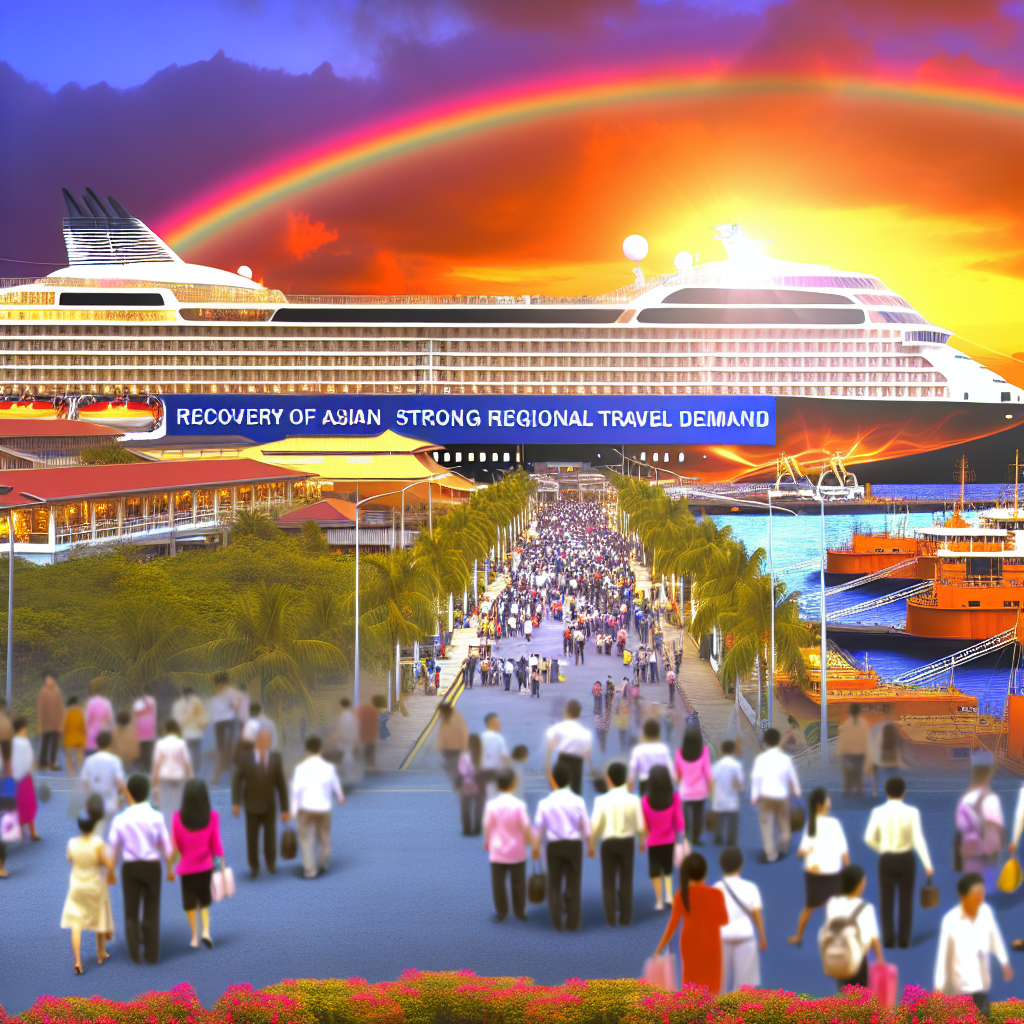Asian Cruise Industry Reports 70% Recovery with Strong Regional Travel Demand
The Asian cruise industry is witnessing a remarkable resurgence as it reports a 70% recovery compared to pre-pandemic levels. This revival is largely driven by robust regional travel demand, evolving consumer preferences, and strategic industry adaptations. After the severe disruptions caused by COVID-19, the cruise sector in Asia is navigating a path to renewed growth, signaling optimism for stakeholders and travelers alike.
Post-Pandemic Recovery: A Closer Look
The global cruise industry was among the hardest hit by the COVID-19 pandemic, with operations coming to a near halt in 2020 and early 2021. Asia, a key growth market for cruises, experienced significant setbacks due to strict travel restrictions and port closures. However, recent data from leading cruise operators and industry analysts indicate a strong rebound.
According to the Cruise Lines International Association (CLIA) Asia-Pacific report released in early 2024, the region’s cruise passenger volume has reached approximately 70% of the 2019 figures. This recovery is notable given the ongoing challenges such as sporadic travel restrictions and health safety concerns.
Key Drivers of Recovery
Several factors have contributed to the Asian cruise industry’s resurgence:
- Strong Regional Travel Demand: With international travel still facing some limitations, many travelers are opting for regional cruises within Asia. Destinations such as Japan, South Korea, China, and Southeast Asia have seen increased cruise bookings.
- Health and Safety Protocols: Cruise lines have implemented rigorous health measures, including vaccination requirements, enhanced sanitation, and onboard medical facilities, which have boosted traveler confidence.
- Innovative Itineraries: Operators are offering shorter, more flexible cruises that cater to domestic and regional tourists, making cruising more accessible and appealing.
- Government Support: Several Asian governments have introduced incentives and eased port restrictions to encourage cruise tourism as part of their economic recovery plans.
Case Studies: Leading Cruise Operators in Asia
Several cruise lines have played pivotal roles in the industry’s recovery by adapting their strategies to the new market dynamics.
- Star Cruises: As one of Asia’s largest cruise operators, Star Cruises has reported a 65% increase in bookings for its regional cruises in 2023 compared to the previous year. Their focus on short cruises around Southeast Asia, including stops in Malaysia, Thailand, and Vietnam, has resonated well with travelers.
- Princess Cruises: Princess Cruises has expanded its itineraries in Japan and South Korea, capitalizing on the reopening of these markets. Their “Japan Explorer” cruises have seen a surge in demand, with occupancy rates reaching 80% in the first quarter of 2024.
- MSC Cruises: MSC has introduced new ships tailored for the Asian market, featuring culturally relevant dining and entertainment options. Their strategy to blend luxury with regional appeal has helped them capture a growing segment of affluent travelers.
Emerging Trends Shaping the Future
The recovery phase is also highlighting several trends that are likely to shape the future of cruising in Asia:
- Eco-Friendly Cruises: Environmental sustainability is becoming a priority, with cruise lines investing in greener technologies and promoting responsible tourism.
- Digital Integration: Enhanced digital services such as contactless check-ins, virtual shore excursions, and personalized apps are improving the passenger experience.
- Focus on Wellness: Wellness-themed cruises offering spa treatments, fitness programs, and healthy dining options are gaining popularity among health-conscious travelers.
- Customized Experiences: There is a growing demand for tailored cruise experiences that cater to specific interests such as cultural immersion, adventure, and gastronomy.
Challenges and Opportunities Ahead
Despite the positive momentum, the Asian cruise industry faces challenges including geopolitical tensions, fluctuating fuel prices, and the need to continuously adapt to evolving health regulations. However, these challenges also present opportunities for innovation and collaboration among cruise lines, ports, and governments.
For instance, partnerships between cruise operators and local tourism boards can enhance destination marketing and infrastructure development. Additionally, investments in sustainable practices can attract environmentally conscious travelers and comply with international regulations.
Conclusion
The Asian cruise industry’s 70% recovery marks a significant milestone in its post-pandemic revival. Fueled by strong regional travel demand, strategic innovations, and enhanced safety protocols, the sector is poised for sustained growth. Leading cruise operators are successfully tapping into emerging trends and adapting to new consumer behaviors, while governments continue to support the industry’s resurgence.
As the cruise market in Asia continues to evolve, stakeholders must remain agile and forward-thinking to capitalize on opportunities and address challenges. Ultimately, the industry’s recovery not only reflects resilience but also underscores the enduring appeal of cruising as a preferred mode of travel in the region.





